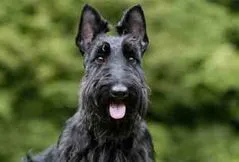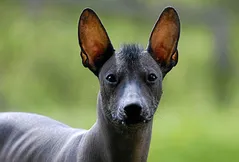
Swedish Vallhund
The Swedish Vallhund is energetic and playful. He is of ancient legend, is a smart and sociable herder of dense coat and boundless energy.
Overall Status
| Height | 11.5 to 13.5 inches at the shoulder |
| Temperament | Friendly, Energetic, Watchful |
| Weight | 20 to 30 pounds |
| Life Expectancy | 12 to 14 years |
| Coat Color | Blue, Brown, Gray, Red |
| Barking Level | Likes To Be Vocal |
Quick Factors
| Playfulness | |
| Dog Friendly | |
| Exercise Need | |
| Grooming Needs | |
| Strangers Friendly | |
| Family Affectionate |
Daily Care
Grooming Tips
Because the Swedish Vallhund is shown without trimming the coat, grooming is a snap. Weekly brushing will keep loose and dead hair under control and the dog should be bathed as needed, which can be anywhere from 4 to 8 weeks, depending upon the individual.Check the ears on a weekly basis for signs of infection, irritation, or wax build up. Cleanse regularly with a veterinarian-approved cleanser and cotton ball. Brush the teeth at least once per week to prevent tartar buildup and fight gum disease. Additionally, nails should be trimmed once per month if the dog does not wear the toenails down naturally.
Exercise Tips
The Swedish Vallhund was bred to be a herding dog so they are a fairly active and energetic breed. These dogs tend to thrive when given a job to do and they are excellent at a number of dog sports including obedience, agility trials, herding, flyball, and tracking. This dog requires a long walk every day to meet his exercise requirements.
Feeding Tips
The Swedish Vallhund is a fairly small dog, so it is recommended that you feed it a dog food diet specially formulated for small-breed dogs. It is also important to note that these little dogs are active, so an active-breed formula may also be a good option depending on your individual dog’s activity level.Any diet should be appropriate to the dog’s age (puppy, adult, or senior). Most Vallhunds are “easy keepers” and need less food than one would think, even if they’re very active.They tend to becomeoverweighteasily, even if they get a lot of exercises. Owners should not free-feed Vallhunds (or any dog)—it’s not normal for dogs to graze, and it makes it difficult to know quickly if the dog isn’t eating well.Learn about whichhuman foodsare safe for dogs, and which are not. Check with your vet if you have any concerns about your dog’s weight or diet.Clean, fresh water should be available at all times.
Health Tips
The average life span of the Swedish Vallhund is 13 to 15 years. Breed health concerns may includecryptorchidism, hip dysplasia, patellar luxation and renal dysplasia.
Trainability
The Swedish Vallhund is an intelligent breed that loves to learn. This being the case, these dogs typically respond well to training as long as you start it at a young age.The longer you wait to train your dog, the more likely he is to develop an independent streak – he may also develop problem behaviors out of boredom. Always use positive reinforcement-based training methods and be firm and consistent in your training with your dog.
History
The Vallhund resemblance to the Corgi raises an interesting but rhetorical question since it can never be answered with any authority: Did the Vikings bring the dogs with them on their coastal raids of England and leave some behind to become the Corgi, or did they bring back canine booty in the form of the Corgi, which then became the Vallhund? One clue is that Viking bowsprits found on the Irish coast were decorated with dogs that look an awful lot like the Vallhund. We’ll never know for sure, but it’s fun to speculate.However he came into existence, the Swedish Vallhund, also known as the Vastgotaspets or Swedish Cattle Dog in Sweden, was a farm dog for centuries, herding cattle, driving off critters, and acting as a watchdog. It wasn’t until he had almost disappeared that anyone took much notice of him.The Swedish Kennel Club recognized the breed in 1943, making the Valhund a popular pet in both Sweden and Britain. The dogs were first brought to the United States in 1983, and the American Kennel Club recognized the Vallhund in 2007. Today he ranks 142nd among the breeds registered by the AKC.






